Post by Robert on Jun 25, 2014 19:19:42 GMT -7
The Light Tank (Airborne) M22 or Locust was an American-designed airmobile light tank which was produced during World War II. An American pilot was sent to Britain to illustrate that the tank could fit inside a Hamilcar glider and be landed.
In March 1945, the 6th Airborne Division was informed that it would be participating in Operation Varsity, an airborne operation in support of 21st Army Group crossing the River Rhine during Operation Plunder. Eight Locusts from the regiment, divided into two troops of four, would land with the 6th Airlanding Brigade in landing-zone 'P' east of the Diersfordter Wald and west of Hamminkeln, acting as a divisional reserve; the rest of the regiment would arrive by road after crossing the Rhine with 21st Army Group.
The eight Locusts were loaded into separate Hamilcar gliders between 17–20 March, and on the morning of 24 March were towed from the airfield by Handley Page Halifax heavy bombers to join the rest of the gliders and transport aircraft carrying the two airborne divisions. Weather conditions for the operation were excellent and all eight gliders arrived in the vicinity of the landing zone without incident. During their attempts to land, however, the small force was severely depleted; one glider broke away from the Halifax towing it and disintegrated; apparently as a result of structural failure, with the Locust inside it falling to the ground. Three more gliders came under heavy German anti-aircraft fire and crashed as they landed; one tank survived with a damaged machine gun, another crashed through a house which put its wireless radio set and main armament out of action, and the third broke loose of the glider as it landed and was flipped over onto its turret, rendering it useless.
Six Locusts landed intact on the landing zone, including several with significant damage, but two of these tanks would never reach the rendezvous point chosen for the regiment. One undamaged tank came to the aid of a group of American paratroopers who were under fire from a German self-propelled gun but was rapidly knocked out by the Germans. A second tank broke down as it attempted to tow a jeep out of a crashed glider. Of the four Locusts that reached the rendezvous point, only two were undamaged and fully fit for action; these two were immediately deployed to the high ground east of the Diersfordter Wald, while being covered by the two damaged tanks. Upon arrival they were engaged by German troops and had to be supported by an infantry company, and soon their presence began attracting a great deal of artillery and anti-tank fire. Although neither of the tanks were hit, a number of infantrymen were killed or wounded and after several hours the tanks were forced to withdraw. The four tanks and remaining infantry formed a small force that repelled several German attempts to attack their position, and were eventually relieved at 10:30 by a tank squadron from the 44th Royal Tank Regiment and elements of the rest of the 6th Airborne Armoured Reconnaissance Regiment. (Thanks to Wiki for the history)
This is the Bronco kit. It is a great kit. With very good photo etch and link & length track.

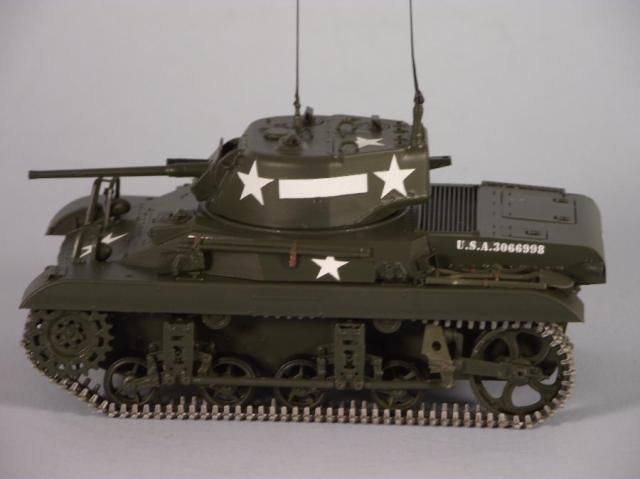
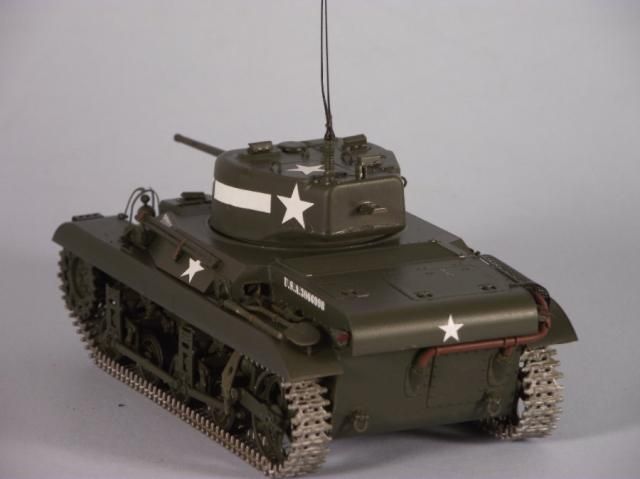

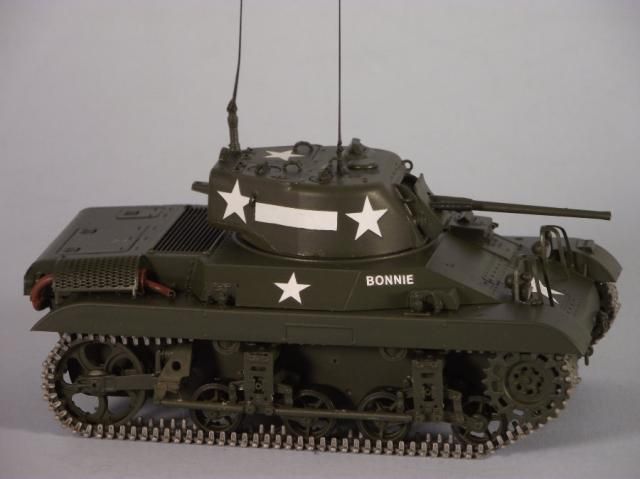
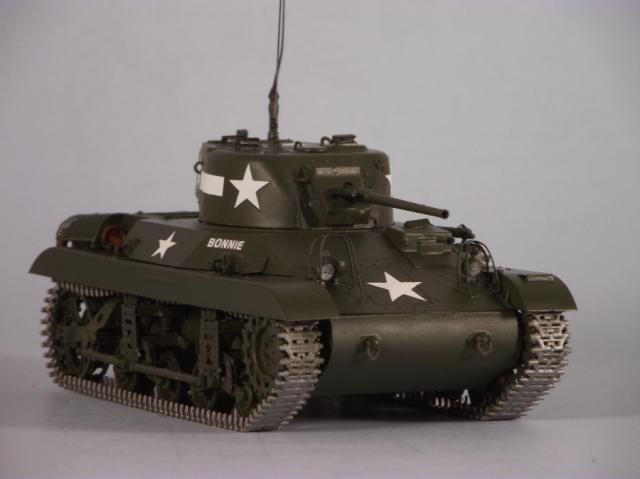
Same 1/35 Scale

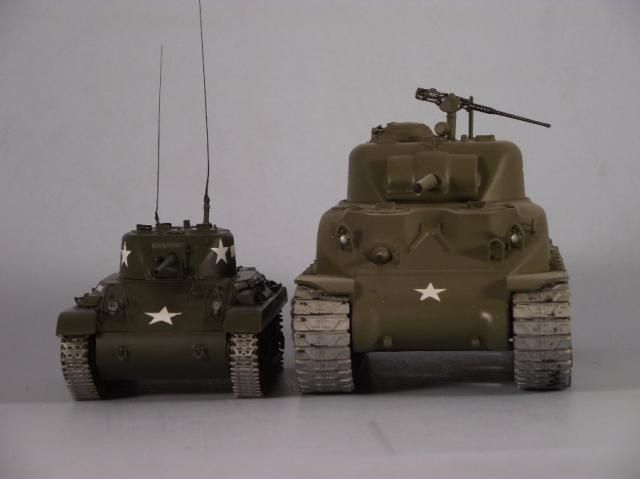
In March 1945, the 6th Airborne Division was informed that it would be participating in Operation Varsity, an airborne operation in support of 21st Army Group crossing the River Rhine during Operation Plunder. Eight Locusts from the regiment, divided into two troops of four, would land with the 6th Airlanding Brigade in landing-zone 'P' east of the Diersfordter Wald and west of Hamminkeln, acting as a divisional reserve; the rest of the regiment would arrive by road after crossing the Rhine with 21st Army Group.
The eight Locusts were loaded into separate Hamilcar gliders between 17–20 March, and on the morning of 24 March were towed from the airfield by Handley Page Halifax heavy bombers to join the rest of the gliders and transport aircraft carrying the two airborne divisions. Weather conditions for the operation were excellent and all eight gliders arrived in the vicinity of the landing zone without incident. During their attempts to land, however, the small force was severely depleted; one glider broke away from the Halifax towing it and disintegrated; apparently as a result of structural failure, with the Locust inside it falling to the ground. Three more gliders came under heavy German anti-aircraft fire and crashed as they landed; one tank survived with a damaged machine gun, another crashed through a house which put its wireless radio set and main armament out of action, and the third broke loose of the glider as it landed and was flipped over onto its turret, rendering it useless.
Six Locusts landed intact on the landing zone, including several with significant damage, but two of these tanks would never reach the rendezvous point chosen for the regiment. One undamaged tank came to the aid of a group of American paratroopers who were under fire from a German self-propelled gun but was rapidly knocked out by the Germans. A second tank broke down as it attempted to tow a jeep out of a crashed glider. Of the four Locusts that reached the rendezvous point, only two were undamaged and fully fit for action; these two were immediately deployed to the high ground east of the Diersfordter Wald, while being covered by the two damaged tanks. Upon arrival they were engaged by German troops and had to be supported by an infantry company, and soon their presence began attracting a great deal of artillery and anti-tank fire. Although neither of the tanks were hit, a number of infantrymen were killed or wounded and after several hours the tanks were forced to withdraw. The four tanks and remaining infantry formed a small force that repelled several German attempts to attack their position, and were eventually relieved at 10:30 by a tank squadron from the 44th Royal Tank Regiment and elements of the rest of the 6th Airborne Armoured Reconnaissance Regiment. (Thanks to Wiki for the history)
This is the Bronco kit. It is a great kit. With very good photo etch and link & length track.






Same 1/35 Scale


